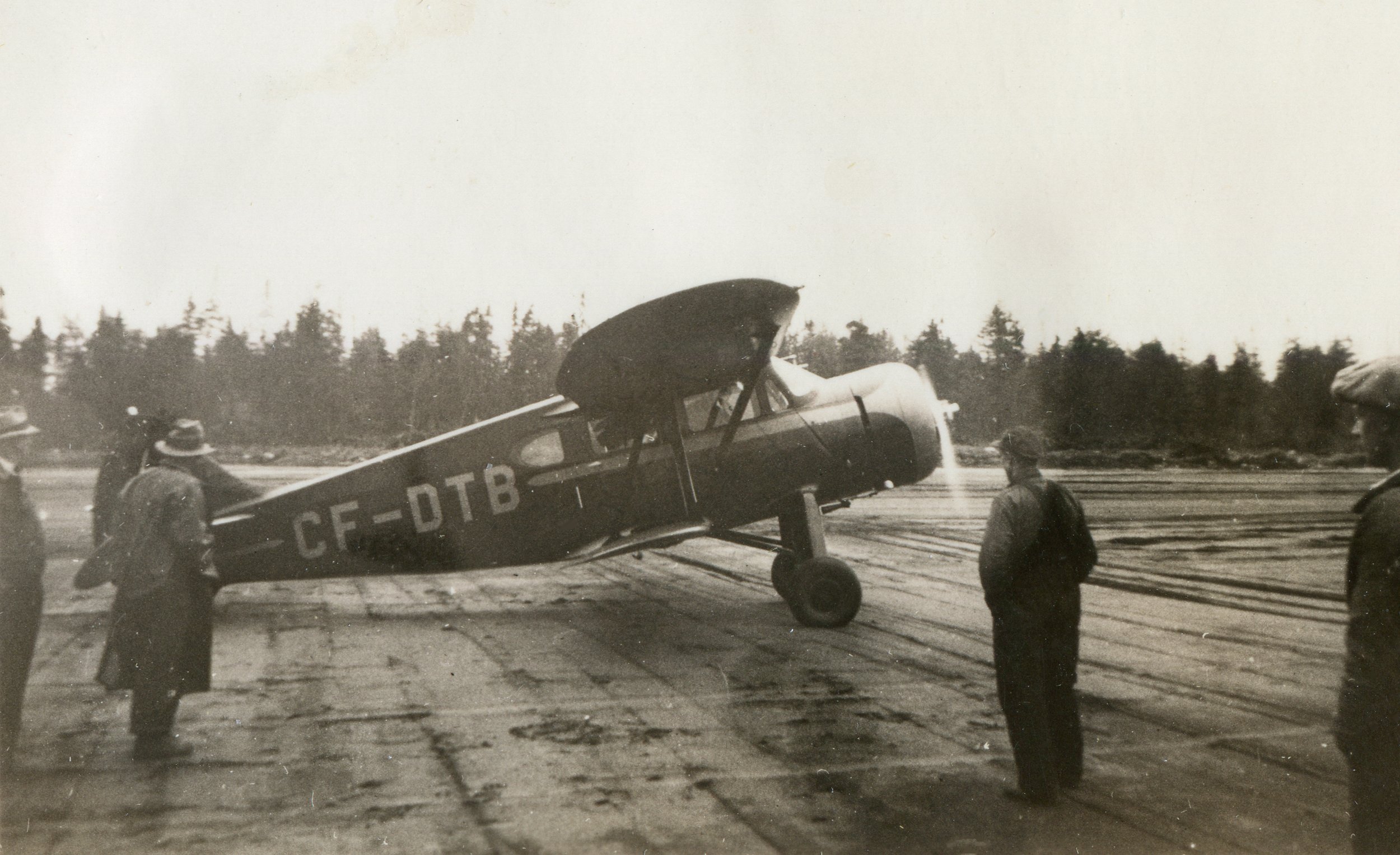The North Bay Airport (1938)
All aviation in Canada was controlled by the Department of National Defence (DND) from 1923 until 1936.
During this period, city politicians and community leaders lobbied the provincial and federal governments to construct a land based airport in North Bay. Chamber of Commerce President Reg Harris was actively involved in identifying the site of and advocating for the construction of the airport at North Bay in the mid-1930s. Building an airport would ensure that North Bay was included as a station on the national airway route for the Trans-Canada Air Lines system that was already being planned.
In 1935, a federal department for civil aviation, independent of the DND was established. The Department of Transport became official on November 2, 1936 and was headed by minister Clarence Decatur Howe.
Under Howe’s direction, the Department of Transport (DOT) took over the development of Canada’s national aviation network, the Trans-Canada Airway. The DOT was now responsible for creating regulations, authorizing pilots’ licenses, deciding where new airports were to be constructed, where to place emergency airfields, and more.
In 1937, the same year that Trans-Canada Air Lines was created, Howe visited North Bay to assess the viability of building an airport in the city. After years of requests and negotiations between North Bay, the provincial government, and the federal government, Ontario Premier Mitchell Hepburn announced in 1938 that the Government of Canada had approved the construction of an airport in North Bay.
The province agreed to turn over a parcel of land northwest of the city, at a location called Rankin's Corner, and improve the road from the city to the airport site. Much of the original siting and purchasing for the airport was done by Major Robert Dodds of the Department of Transport. The airport opened November 28, 1938 and was the first airport to be paid for entirely from federal funds.
The first official landing at the airport occurred in September 1938 by Squadron Leader Robert Dodds, RCAF. The first landing by a Trans-Canada Air Lines airliner was in November, 1938. Due to poor weather, regular passenger service did not begin until 1939. Just before the outbreak of World War II, the city’s first hangar was built for Trans-Canada Air Lines. Now, over 80 years later the hangar is still in operation, and is currently used by Voyageur Aviation.
The first airport terminal building during its construction in 1938.
North Bay Museum Collection
Airport terminal building, circa 1939.
North Bay Museum, Hicks Collection
The first official landing at the North Bay Airport in September 1938 by Squadron Leader Robert Dodds, RCAF. Dodds was the Inspector of Airways and Airports for the Department of Transport.
North Bay Museum, Hicks Collection
A Trans-Canada Air Lines L10 airliner at the North Bay Airport in late 1938 before the runways were paved.
Doug Newman, 22 Wing Heritage Officer




